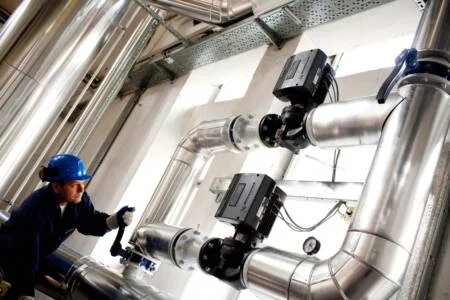Biomass is a major source of energy supply and it is used at different levels of technology
It is the 4th largest contributor to the world`s primary energy supply (after oil, coal and natural gas) and provides four times more primary
energy than hydropower. Biomass comes in many forms; wood and crop residues such as sugar cane, energy crops, sewage waste, animal dung, industrial and municipal waste, oil from plants, and many others. Wood is by far the dominant biomass source. Scientists are identifying new biomass feedstocks such as jatropha and algae, and lignocelluloses produced from cellulosic ethanol. These are outlined in the report. It can be used “directly” in “traditional” applications, as in household fires or wood burning cookers, or “indirectly” after conversion into a secondary form of energy, such as biopower and cogeneration, biodiesel or biogas. It is the only renewable that can easily be processed into these three forms of secondary energy and is the largest form of primary renewable energy. As a secondary form of energy, biomass has a much smaller share of power
generation than hydro power, which accounts for 15 times more electricity. The greatest use of direct or “traditional” biomass is in the developing countries, while the developed countries lead in biomass conversion.
Outline of the report:
This report is concerned with the technologies, markets and development of biomass energy, both primary and secondary. Indirect use is the focus of much technological development both in the industrialised and the developing countries. Resources are enormous and constantly being renewed, either as forest or crop residue, the commercial cultivation of energy crops, and through the wastes generated from organic and industrial sources. The report has more extensive quantified information than in the last edition, with historical profiles of the 25 major biomass-using countries. Detailed sections of the report provide surveys of principal biomass technologies and feedstocks together with their usage:
· Biofuels, including bioethanol and biodiesel, with extensive coverage and discussion of the issues in the bioethanol industries in the USA and Brazil and biodiesel in Europe.
· Municipal Solid Waste (MSW), with surveyes of the main markets in Europe, the US, India, Japan and China.
· Landfill gas, with surveys of the US, Europe and China.
· Biogas, produced by anaerobic digestion or fermentation of many waste feedstocks.
· Biopower, with outlines of the production technologies and historical data of generating capacity in the US and Europe from 2000 to 2007.
Environmental issues are discussed in the report, including national positions and a brief discussion of the controversy surrounding the misuses of data by promoters of the global warming concept.
Contents
Executive Summary …… 8
Regional usage and development ….. 9
Usage patterns. 9
New feedstocks – second generation feedstocks … 10
Technologies and transformation …. 10
Pyrolysis…. 10
Gasification …. 10
Charcoal production….. 11
Briquetting and pelletising.. 11
Biofuels for transportation.. 11
Bioheat…… 11
MSW (Municipal Solid Waste) .. 11
LFG (Landfill Gas) . 11
Biopower… 12
Biomass legislation 12
1. Introduction.. 13
2. Biomass as a primary fuel ….. 15
TPES – Total Primary Energy Supply … 15
TFEC – Total Final Energy Consumption….. 16
The Fuel Ladder …. 19
Urban usage .. 19
Future primary energy production and consumption…… 19
Bioenergy power generation….. 20
3. Benefits and constraints of bioenergy …. 22
Factors encouraging the development of biomass energy…. 23
4. Biomass resources…. 24
Agricultural crops … 24
Energy cropping…. 26
5. Biomass conversion technologies … 28
Direct use….. 28
Cogeneration . 28
Transformation. 29
Electricity generation….. 29
_ Conventional steam boiler …… 29
_ Co-firing. 29
_ Anaerobic digestion… 30
_ Pyrolysis 31
_ Charcoal production .. 31
_ Briquetting and pelletising 31
_ Modular systems .. 31
Biofuels for transportation.. 32
Ethanol…… 32
Biodiesel … 32
Bio refineries.. 33
Bio-based products . 33
Technology developments.. 34
6. Biomass usage and technologies 36
Biomass electricity and heat ….. 36
Biomass heat . 36
Technology for biomass heat…. 38
Domestic heat production .. 38
Larger scale use of biomass fuel for heating…… 39
District heating …… 39
Industrial use of biomass electricity and heat….. 39
European competitiveness 40
Market characteristics.. 40
Infrastructure constraints … 40
USA…. 40
Rest of world.. 40
Liquid biofuels.. 41
Technology and Feedstocks….. 41
Jatropha …. 43
Ligno-cellulose…… 44
Waste. 45
Algae.. 45
Biofuel production .. 46
Markets ….. 46
Food versus fuel …. 47
Ethanol…… 47
USA…. 48
Fiscal stimulus …… 51
Motor fuel applications for ethanol in the US…… 51
Brazil .. 52
EU…… 53
Biodiesel … 54
Biofuels Developments at the EU Member State Level . 57
USA…. 60
EPAct 1992…. 60
EPAct 2005…. 61
Biodiesel Tax Credit…… 61
Credit Trading Programme 61
State incentives for use of biodiesel 61
International incentives for proportion of biodiesel .. 62
Australia …. 62
Thailand: … 62
Malaysia:… 63
Technology and feedstocks for ethanol and biodiesel … 63
Ethanol…… 64
Biodiesel … 64
Environmental impacts . 64
Manpower requirements …. 65
Market position…… 65
Brazil, USA, EU competitiveness….. 65
Ethanol…… 65
Biodiesel … 66
MSW (Municipal Solid Waste)…. 67
Technology …. 67
Waste reduction…. 67
Environmental issues…. 68
Recession . 68
PFIs (Private Finance Initiatives) ….. 68
Private Sector Involvement 69
Evolution of Cost and Technical Performance of MSWC…… 69
Global picture. 70
EU…… 70
Waste policy in Europe . 74
East Asia… 78
Japan . 79
China.. 80
India … 80
Pacific 80
South and Central America 80
Future prospects… 81
Landfill gas .. 82
Environment… 82
Technology …. 82
Landfill gas market 83
EU…… 84
EU environmental regulations… 84
USA…. 84
Developing Countries and CERs….. 86
Africa.. 87
China.. 87
Other East Asia and Pacific …… 87
South West Asia …. 87
Latin America and the Caribbean …. 87
Market problems …. 87
Future prospects for landfill gas 87
Biogas … 89
Biopower…… 92
Technology …. 93
Conventional steam cycle plant 94
Gasification and other advanced processes 94
Co-firing with fossil fuels …. 94
Advantages of co-firing . 94
Disadvantages of co-firing . 94
Regional development .. 95
United States . 96
Europe …… 96
Brazil 100
7. Regional and national biomass market and technology review…… 101
United States .. 101
Biomass Consumption by Energy Source and Use Sector . 103
Biomass Resources…. 104
Electricity generation from biomass…. 105
Canada 108
Transformation…… 112
Electricity generation .. 112
Biofuel ….. 113
Equipment for biomass power generation . 113
National market characteristics in the EU. 115
Austria. 115
Biomass R&D…… 117
Finland. 119
Biomass R&D…… 121
France.. 122
Germany….. 125
Biomass R&D…… 127
Italy …… 128
Biomass R&D…… 130
Norway 131
Spain…. 133
Biomass R&D…… 135
Sweden 136
Biomass R&D…… 138
Turkey.. 140
CIS 142
Russia.. 143
Asia Pacific 144
Australia….. 145
China … 148
Biomass R&D and technology development …. 149
New technologies developed in China …… 149
New energy fuels and products under development …. 150
Government support … 150
South Asia…. 151
India ….. 152
Bangladesh 155
Southeast Asia …… 156
Indonesia…. 157
Government support … 158
Japan… 159
Malaysia ….. 161
Government support … 162
Pakistan…… 163
Philippines . 164
Government support … 165
Thailand…… 166
Government support … 167
Government support … 167
Vietnam …… 168
Biomass R&D and government support …. 169
Latin America . 170
Brazil…. 172
Mexico . 174
Africa … 177
8. Environmental issues…. 179
The United Nations Framework Convention on Climate Change, 1992 … 179
Kyoto Protocol …… 179
Status of ratification of the Kyoto Protocol by Annex 1 countries December 31, 2006.. 181
The “Hockey Stick Effect” and the “Medieval Warming”…… 181
Comment on Climate Report 2001 and Paris Report 2007. 182
USA environmental legislation 182
EU Environmental Directives… 183
LCPD – Large Combustion Plant Directive 183
ETS – Emissions Trading Directive 183
IPPC – Integrated Pollution Prevention & Control Directive. 184
EU Biofuels Directive .. 184
The EU Landfill Directive . 184
Hazardous Waste Directive …. 184
Incineration of Waste (2000/76/EC) (implemented December 2002)….. 184
Packaging and Packaging Waste Directive (94/62/EC) …… 184
End of Life Vehicles Directive (2000/53/EC) (implemented April 2002). 184
The technology and other abatement measures for carbon dioxide – CO2 185
Carbon sequestration . 185
Sleipner Project… 186
9. Comments on biomass statistics…. 187
10. Sources .. 188
Share your industry press now!
Are you a PR agency or sustainability-focused organization? Join the World of Renewables network FREE today and gain exclusive access to our platform to promote your business, share the latest industry news, and connect with a global audience of 700,000+ renewable energy professionals.
Register Now to start posting your updates and showcase your expertise to a highly engaged, environmentally-conscious community.
Find out more about our Content Partnership Programs.*2024 AWARD WINNER* Websites & Mobile Sites, Webby Winner, Peoples Voice 2024















